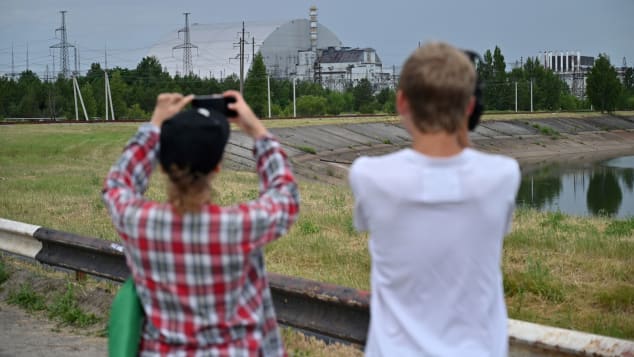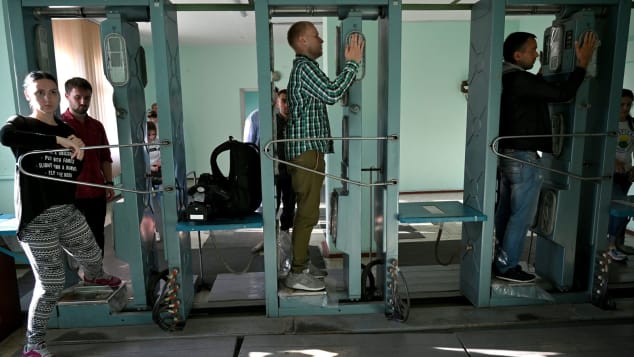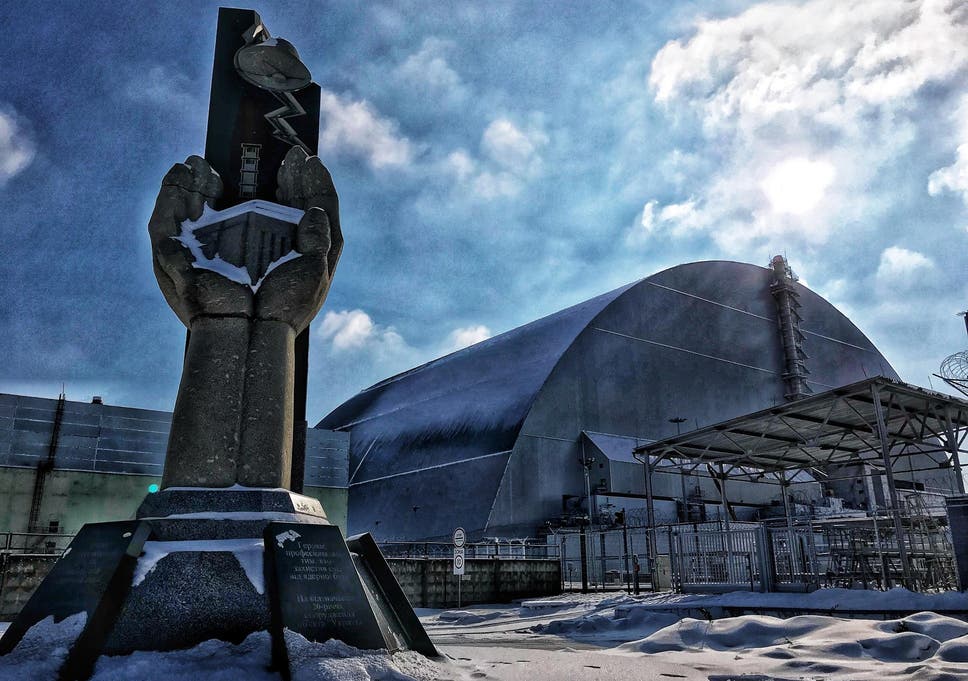Disaster Tourism: Chernobyl
"There was a bang and we turned and saw sparks flying out like shooting stars, and then white steam and black smoke mixed together."
"A column of light was visible, neon blue. We thought it was a hydrogen explosion -- anything but the reactor."
"They told us our reactor was the safest in the world."
Sergei Parikvash, Chernobyl employee
"We shouldn't be making a show out of this."
"It's a place of tragedy that needs further study rather than people jostling around."
Dr.Yury Bandazhevsky
"Every third person comes because of the TV show."
"I know because no one used to ask about the 'bridge of death', before."
Svetlana Sklyarenko, guide, Chernobyl tours
"It's good when people find out about the tragedy for themselves."
"Don't we visit monuments to soldiers who died in the Second World War?"
Oleksiy Ananenko, depicted in the HBO mini series

After the accident at the Chernobyl nuclear plant in Ukraine, 54 people were known to have immediately died. Among them Valery Khodemchuk, a pump operator. His body remains somewhere in the fourth reactor block to this day. On April 26, 1986 the nuclear catastrophe of the Chernobyl power plant arrested the world's attention. Now, almost 30 years later, the plant has become a tourism site; irresistible to some people who feel drawn to the drama of the unprecedented and deadly event.
The popular HBO mini-series has stirred up international interest in the plant, attracted to Reactor 4 which the series focuses its drama on. The explosion caused by design flaws and human error had wide and deadly repercussions. Now, Ukraine's president Volodymyr Zelensky, with his own experience in show business, has vowed to transform the giant crypt into a "scientific and touristic magnet".
 |
Travelers can visit 300 meters away from the New Safe Confinement.
Genya Savilov/AFP/Getty Images
|
The 1,000 square mile exclusion zone is opening, with 21 new tourist routes. With soaring visitor numbers his dream may reach fruition to help the struggling Ukrainian economy move forward, in a world where world-class destructive man-made catastrophes are equal in popularity to anything that nature herself can stage. Celesium-137 was scattered along with other radioactive isotopes after the explosion and fire, as far as Sweden, while areas of Ukraine, Belarus and Russia saw hugely elevated rates of birth defects and cancer materialize.
The 36,000-ton safe confinement arch representing the largest movable structure ever built and placed over reactor block No.4 in 2016 has resulted in background radiation in most of the exclusion zone lower than what exists in many cities across the globe. In defiance of the ban, a hundred elderly "resettlers" returned to remain in their rural homes. Around the ghost town Pripyat contaminated hot spots remain, long after its 50,000 residents were expelled the day following the explosion.
Sergei Parikvash, then an employee of the plant, was fishing in its cooling pond when the explosion occurred. He simply carried on fishing after the blast. And then when a radioactive graphite film began forming on the water, it dawned on him that something had gone terribly wrong. Tourists surreptitiously enter the off-limits Pripyat Cafe, and then are hunted down as "stalkers", those entering Chernobyl without permission.
 |
Visitors pass through a radiation control checkpoint.
Genya Savilov/AFP/Getty Images
|
After the explosion, Dr. Yury Bandazhevsky found hormonal changes in close to half the 4,000 children in areas next to the exclusion zone. The effects of the Chernobyl blast are not fully understood yet. But the plant insists its procedures ensure that visitors are safe. They are checked for contamination at the entrance, put on scrubs, gloves, shoes, disposable dust mask and a hard hat; everything white to show up any possible contamination stains.
There are 2,900 employees remaining at Chernobyl who maintain the plant. It has one of the largest storage facilities for spent nuclear fuel in Europe. Tours take place almost daily. The exclusion zone, according to the state agency managing it, expects up to 120,000 visitors this year, an increase over last year's 72,000, where foreigners are charged $130, generating hundreds of thousands in income for private companies and the state budget.
Residents of Slavutych, a town built for those who cleaned up after the explosion, called "liquidators", wonder when funding would begin to trickle into their community. "Some of this money should go toward treating sick kids in Slavutych and elsewhere", said Viktor Kharin whose wife and daughters have developed cancers he attributes to radiation exposure after the Chernobyl explosion.
 |
| The actual No. 4 reactor where the explosion occurred is completely covered to stop more radiation from leaking into the air. Photo Ben Smithson |
Labels: Chernobyl, Radioactivity, Tourism, Ukraine


<< Home